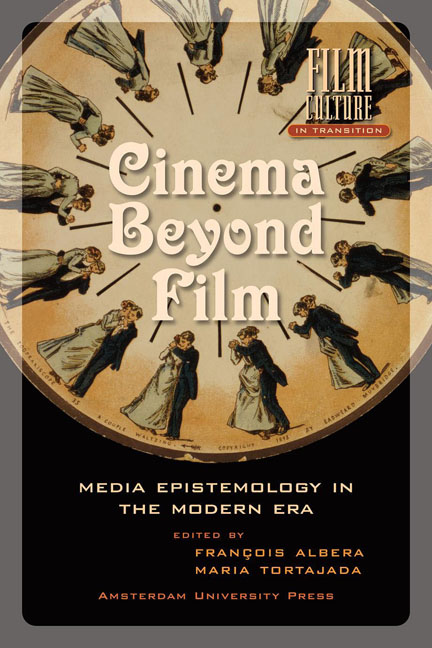The Case for an Epistemography of Montage: The Marey Moment
Published online by Cambridge University Press: 22 January 2021
Summary
My long-term ambition is to redefine the concept of montage in the cinema. But this ambition is part and parcel of a wider field of enquiry of an epistemological nature, which entails adopting a certain viewpoint on the Marey question or Marey ‘moment’ in the history, prehistory and archaeology of cinema.
It started to become clear that the concept of montage needed to be redefined when, in the 1980s and 1990s, scholars specialising in early cinema saw – first in the films of Méliès, then of Lumière and Edison – that there were processes of montage that stood in stark opposition to the doxa associated with the term. Researchers like Jean Giraud, the lexicologist – who identified the first use of the term in 1909 – and historians like Jean Mitry, or the theorists and philosophers of the cinema who came in his wake, agree that montage only exists when there is a certain narrative, discursive and stylistic development of the cinema, whether it is a process of narrative (sequence) or exhibition (parallelism), or a trope (‘metaphor’, analogy, or series).
But this approach is clearly limited by a prejudgement of an aesthetic nature, and, hence, obfuscates the very core of the matter and prevents one from apprehending the true nature of cinema.
In 1984, when André Gaudreault identified Méliès as the pioneer of the link shot, Pierre Jenn suggested that Méliès’s operations of special effects, assemblage and substitution be examined in terms of montage or proto-montage.
There is the well-known story – which Méliès himself referred to in 1907 – about the camera accidentally stopping for one minute while filming on Place de l’Opéra. The result was that an omnibus became a hearse and men changed into women. This was seen as the beginning of the special effect ‘by substitution’ and was later used for different effects of ‘conjuring away’ or transforming a character or object before the spectators’ eyes. But what is not known is that Méliès wrote that he only mentioned this effect after having ‘stuck together’ the film ‘where it broke’ – i.e., after having cut and mounted the film.
- Type
- Chapter
- Information
- Cinema Beyond FilmMedia Epistemology in the Modern Era, pp. 59 - 78Publisher: Amsterdam University PressPrint publication year: 2012
- 17
- Cited by



